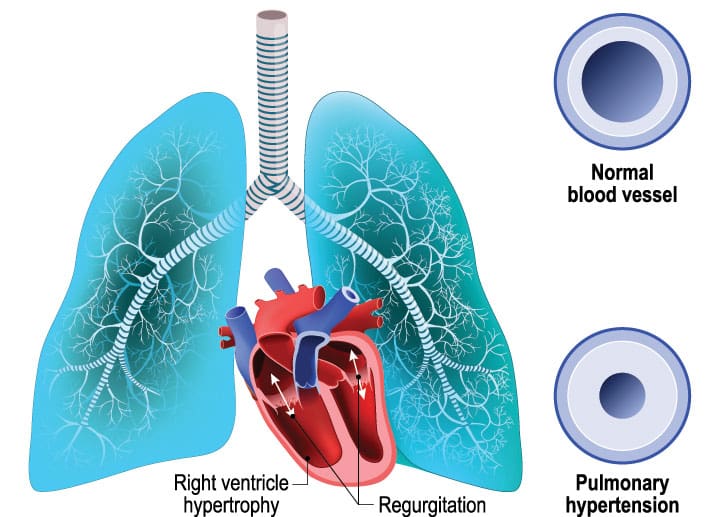Trauma care always evolves in war. And so does combat health support. Both change because the nature of warfare and the battlefield itself change. In Iraq, we’ve learned many lessons that have lead to major advances in military and civilian trauma care and to many important changes in combat health support.
Today, the battlefields in Iraq and Afghanistan are characterized by quick military operations, increased mobility and dispersion of the units, flexible and rapid task organization, and geographically extended lines of communication. On those battlefields, we practice life- and limb-saving surgery in an austere environment without the high technology available in a civilian intensive care unit (ICU). That’s why U.S. Army critical care nurses need not only top-notch nursing knowledge and skills, but also an ability to adapt to circumstances and environment.
Understanding the five levels of care
To understand nursing care in Iraq, you need to understand the structure of military care. Military doctrine supports a system to triage, treat, evacuate, and return soldiers to duty in the most efficient manner. There are five levels of medical care. Unlike civilian hospitals, the different levels indicate the capabilities rather than the quality of care.
• Level One care begins on the frontline or within the combat zone. Immediate first aid is delivered by the wounded soldier, a fellow soldier, or a combat lifesaver (a nonmedical person trained in enhanced first aid). Level One care also comes from combat medics, who are trained as emergency medical technicians and perform triage; assess airway, breathing, and circulation; control bleeding; administer narcotics for pain; and call for evacuation to a Forward Surgical Team or a combat support hospital.
• Level Two care also begins on the frontline or within the combat zone. In the Army, the Battalion Aid Station and the Forward Surgical Team provide Level Two care. The Battalion Aid Station has medics, physician assistants, and physicians. The Army is considering replacing physician assistants with nurse practitioners in the Battalion Aid Station.
• Level Three care takes place in a combat support hospital, which is a network of long, insulated tents attached to one another. The combat support hospital provides hospitalization and outpatient services for almost all patients.
• Level Four care is medical-surgical care provided outside the combat zone. Such care is provided in field hospitals, general hospitals, and fixed facilities such as Landstuhl Army Regional Medical Center in Germany.
• Level Five care is given in hospitals in the United States, such as Walter Reed Army Medical Center in Washington, D.C. or Brooke Army Medical Center in San Antonio, Texas.
On the frontline team
All Forward Surgical Teams provide acute care nursing and surgical nursing far forward on the battlefield to stabilize and resuscitate soldiers with life- and limb-threatening injuries. These teams are on the front lines with the fighters but may also be assigned to a Battalion Aid Station. In that role, a team prepares incoming patients for surgery and can provide initial surgery and postoperative care for 30 wounded or injured patients over a 72-hour period.
Each Forward Surgical Team is equipped to move directly behind troops and, within 90 minutes, establish a functioning hospital with four ventilator-equipped beds and two operating tables. For units that parachute into the combat area, supplies are packed in five backpacks (ICU, surgery, anesthesia, general surgery, and orthopedic packs). For units that travel in vehicles, the supplies are packed in metal chests. The backpacks and chests hold sterile items, anesthesia equipment, drugs, drapes, gowns, catheters, and a hand-held i-STAT that tests hemoglobin, hematocrit, electrolytes, and blood gases. Also included are a small ultrasound, portable monitors, transport ventilators, an oxygen generator, 20 units of packed red blood cells, six stretchers, and six litter stands.
Changing nursing care for soldiers
One success of the Iraq war has been the use of protective body and vehicle armor to block fatal shots to the chest and abdomen. In Vietnam, similar shots killed many soldiers. Because of this protective equipment, chest injuries account for only 15% of war injuries, a decrease from previous wars. Many of these injuries can be stabilized with a chest tube and careful monitoring of the chest-tube output and the soldier’s breath sounds.
Damage-control surgery is one of the major advances in surgical practice in recent years. Today, massive abdominal injuries caused by penetrating fragments are not closed after the initial damage-control surgery because of hematomas, edematous small-bowel tissue, and numerous laparotomy packs. In the past, a soldier with such wounds was resuscitated and then underwent conventional trauma surgery to completely repair the injuries. But polytrauma patients can’t tolerate prolonged operative times.
Secondary or penetrating blast injuries are responsible for most wounds and deaths in the war today. Primary blast injuries are caused by barotrauma and result in injury to air-filled organs. These injuries produce rupture of the tympanic membrane, blast lung, bowel perforation, global rupture, and severe cerebral contusions.
In the field, our ability to treat head injuries is limited. Only three hospitals in Iraq can perform computed tomography scans, so after being stabilized, head-injury patients must be sent to one of them. We’ve seen more traumatic brain injuries in Iraq and Afghanistan than in previous wars because of improvised explosive devices—59% of patients exposed to blasts have traumatic brain injuries. To care for soldiers with these injuries, we continually monitor their neurologic status by checking blood pressure and neurologic and vital signs and by administering supportive drugs, such as mannitol and a sedative p.r.n., until transport.
Despite the protective armor, the soldiers’ arms and legs remain exposed and thus vulnerable to home-made munitions. We’ve seen many extremity wounds. The most common are open commuted fractures of the long bones and amputations of legs, arms, or hands. Treatment consists of wound exploration and debridement, antibiotic therapy, and tetanus coverage. To prevent the spread of infection, we don’t use primary closure.
As critical care nurses caring for wounded soldiers in a dirty environment, we must always suspect infection. The force of a blast pushes contaminants deep into wounds. And skip injuries—injuries in which the area just beyond the wound is clean but a deeper area is contaminated—are common.Challenges, accomplishments—and pride
Deployment to a military operation, especially a war zone, presents several challenges for critical care nurses:
• separation from family, usually for a year at a time
• cultural differences
• language differences
• weather challenges, such as dust storms and extremes in temperature• supply shortages, such as running out of alcohol pads or burn sets
• severe trauma—Some nurses enlist right after nursing school and are exposed to trauma not usually seen by experienced civilian nurses.
• threats from local insurgents
• development of post-traumatic stress disorder.
We also face challenges you probably don’t associate with a war zone. Because we have an aging U.S military force, we deal not only with war-inflicted trauma but also with such disorders as myocardial infarction and diabetes. And we face the challenge of providing nursing care to the insurgents. Recently, we had an insurgent on an operating room (OR) table right next to the OR table of the U.S. soldier he shot.
Despite the challenges and stress of providing nursing care on the battlefield, critical care nurses are doing great things, often in austere conditions. Whether in Germany, Hungary, Bosnia, or Iraq, we are proud to serve our country. When our nation calls, nurses respond—standing ready, caring, and proud.
Selected references
DePalma RG, Burris DG, Champion HR, et al. Blast injuries. N Engl J Med. 2005;352:1335-1342.
Department of the Army. Employment of Forward Surgical Teams: Tactics, Techniques and Procedures. Field Manual 8-10-25. Washington, DC: Department of the Army; 1997.
Department of Defense. Emergency War Surgery. 3rd ed (US). Washington, DC: Department of Defense; 2004.
Holcomb JB. Methods for improved hemorrhage control. Crit Care. 2004;8(2):557-560.
Naylor SD. Life savers: new armor stemmed casualties in Bagram, but surgical team still had its hands full. Army Times. 2002;62(April 22):16.
Belinda L. Spencer, RN, MSN, CCRN, ACNP-C, is Chief Nurse of the Army Trauma Training Center in Miami, Florida. Laura R. Favand, RN, MS, was Chief of Education at the Army Training Center in Miami, Florida. She is currently deployed in Iraq with the 67th FST.


















2 Comments.
Hi!
My name is April!
I am a nursing student!
I graduate in May with my bachelors!
I am not married and don’t have any kiddos yet and so I am looking to work overseas once I get my license!
I do have ALOT of questions though.
I just have a heart for our soldiers and am really interested in working on an active battlefield for care and I feel like this is a perfect time in my life to put it to use!
-I was looking at the jobs on on this website!
How do I apply to be a combat nurse?
I have a lot more questions but if you could answer these first that would be great!
Why did they was nurse in the war they could of go hurt or something.How long did they have nurse to help the sick people in the war when people where dieing in the war?Man I feel bad for these people that they got hurt in the in war.I now that we a good nurse here today that still help the sick people today I think it was different in the war when people got sick and now we can make them feel better now and we can save there lives they can live longer to because we help them.They made it alive.